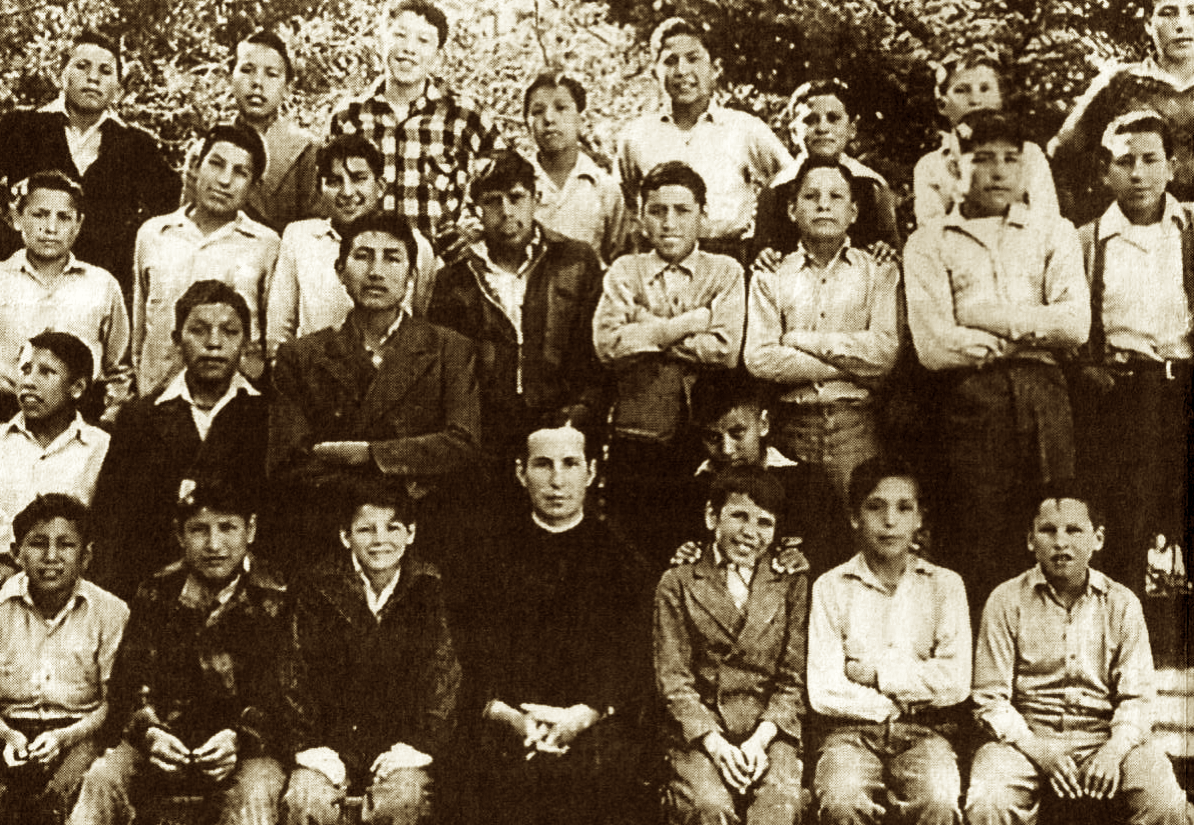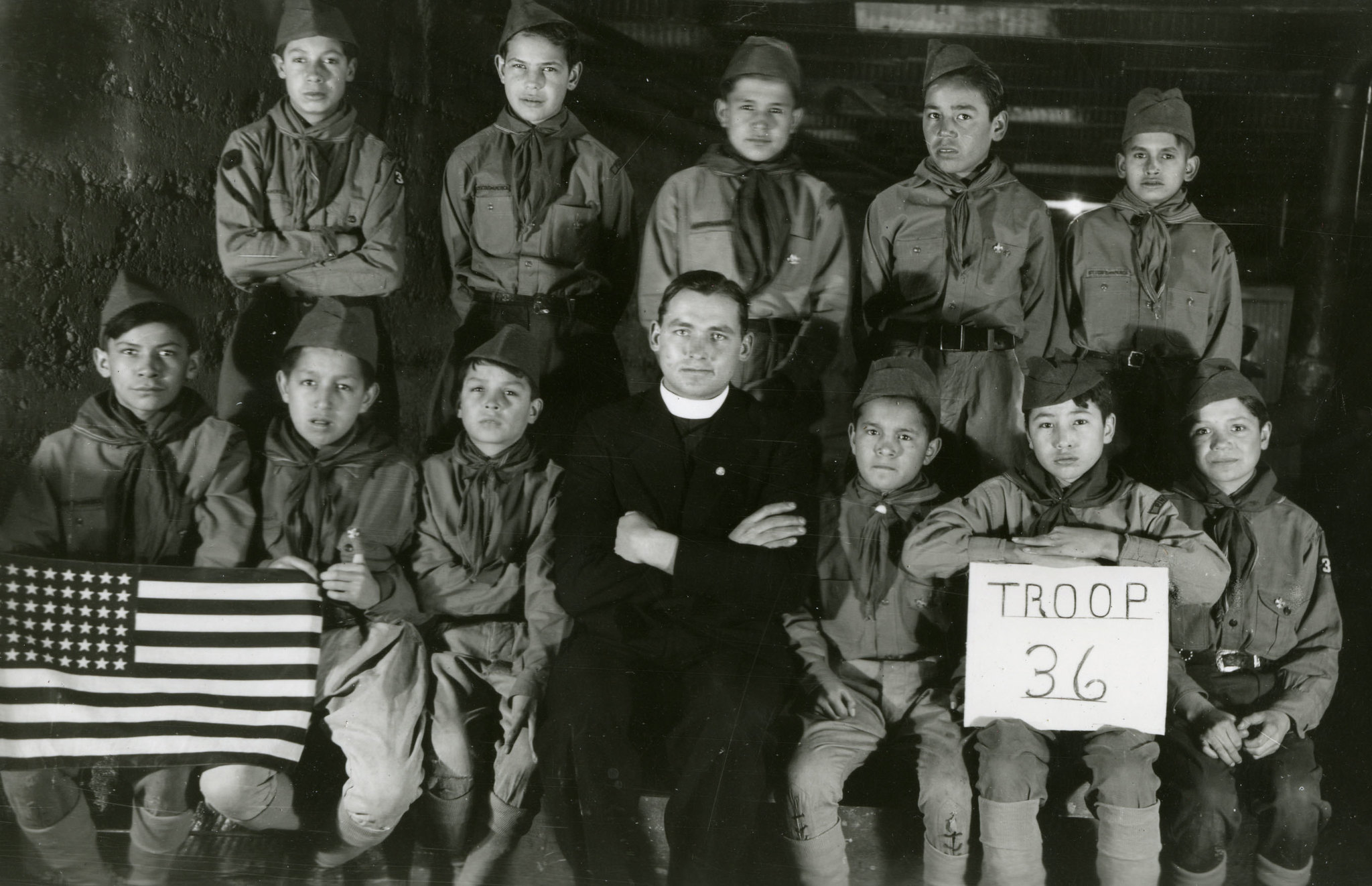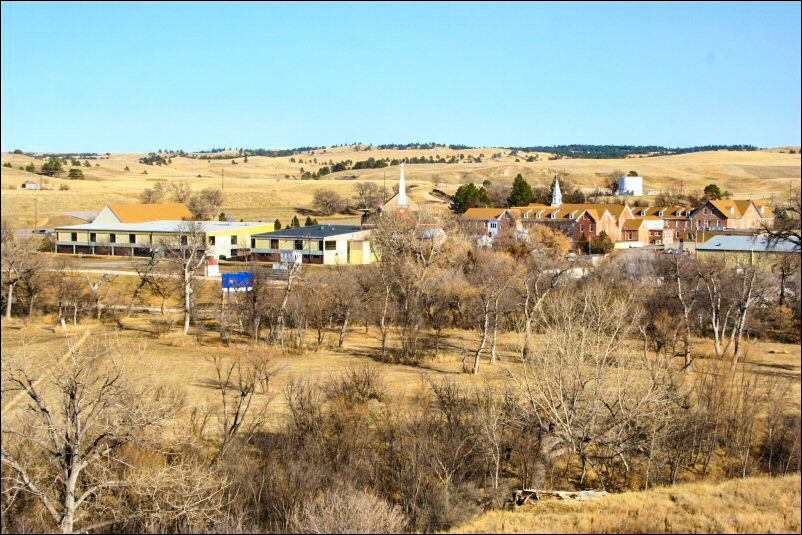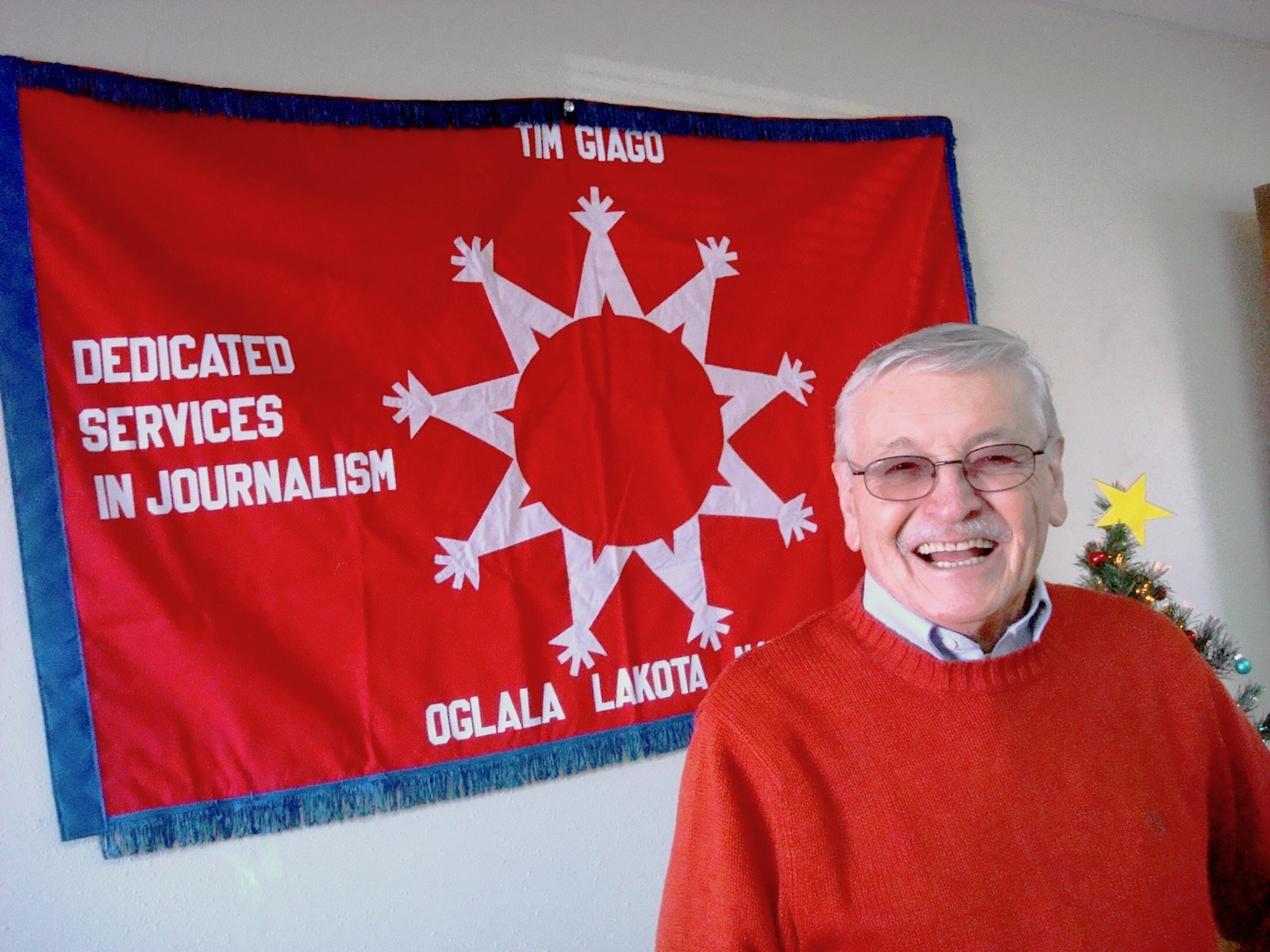Indianz.Com > News > Tim Giago: ‘I will never forgive them for what they did to us’

An era of shame: The boarding schools
Tuesday, January 4, 2022
PINE RIDGE RESERVATION — Holy Rosary Indian Mission, or Red Cloud Indian School as it now calls itself, is located on the Pine Ridge Reservation.
Peter Smith, a writer for the Associated Press, wrote what he probably surmised to be the definitive article on the Indian boarding schools. The local Rapid City Journal picked it up and gave it a headline, “Ex-boarding school confronts its past.”
In the estimation of the staff and management of Native Sun News Today this article missed the point by a mile and a half. Here are a few stories by and about former Mission students that hold the terrible truth.
It seems that the former Holy Rosary Indian Mission boarding school is feeling pangs of guilt and is undertaking what it calls “Truth and Healing.” The school now wants to hear the stories of former students and open its archives and face its past. Read on but please understand the some of the stories of former students are very graphic. Read with caution. And for the staff at Red Cloud, put these stories in your files.Ex-boarding school for Native children owning up to its past | News | https://t.co/v0qOX3pH4C – https://t.co/2HK9vJvTGz #GoogleAlerts
— Bear Christensen (@Bearchristensen) January 3, 2022
 Goldie Walks Under the Ground and Shirley Giago held a terrible secret. They had both been raped by a Mission Groundskeeper who had a house on the Mission grounds. His name was Albert Roki. Goldie and Shirley were just two of the hundred or more girls Roki raped in the years he worked at the Mission.
Both girls took their story to the nuns but they were ignored, but it seems the nuns felt that the story would come out eventually so one day Albert Roki disappeared. Boom, just like that he vanished and was never again seen on the Mission grounds. He never paid the consequences for the damage he did to so many little Lakota girls.
Holy Rosary Indian Mission priests and nuns had but one purpose and that was to strip the Lakota culture and traditional spirituality from the hearts and minds of the young Indian boys and girls placed in their care.
But in order to do that they had to convince the children that their parents and grandparents had no culture and were godless. In many cases they destroyed the children in the process.
Goldie Walks Under the Ground and Shirley Giago held a terrible secret. They had both been raped by a Mission Groundskeeper who had a house on the Mission grounds. His name was Albert Roki. Goldie and Shirley were just two of the hundred or more girls Roki raped in the years he worked at the Mission.
Both girls took their story to the nuns but they were ignored, but it seems the nuns felt that the story would come out eventually so one day Albert Roki disappeared. Boom, just like that he vanished and was never again seen on the Mission grounds. He never paid the consequences for the damage he did to so many little Lakota girls.
Holy Rosary Indian Mission priests and nuns had but one purpose and that was to strip the Lakota culture and traditional spirituality from the hearts and minds of the young Indian boys and girls placed in their care.
But in order to do that they had to convince the children that their parents and grandparents had no culture and were godless. In many cases they destroyed the children in the process.

The Lakota boys and girls came from loving and caring Lakota families. They did not have a choice when it came to the boarding schools. In the beginning it was the law. It was a monster of an experiment exacted on the Indian children that eventually failed, but the cost to so many children was horrific. Some former students may think that reconciliation is good, but others will never give into it. One former St. Francis student said, “I will never forgive them for what they did to us. Even at my age I still have nightmares.” And in the face of all that, South Dakota passed a law that does not allow childhood sexual abuse survivors over age 40 to sue Churches or organizations. All boarding school sex abuse victims are now over 40. Marci Hamilton, a Professor at the University of Pennsylvania who runs an organization advocating for removing the statute of limitations on childhood sexual abuse, told lawmakers that South Dakota is the only state since 2002 to put restrictions on the statute of limitations.#OrangeShirtDay reminds us of the trauma Indian boarding schools inflicted on indigenous people. Today we begin our own Truth & Healing Initiative to openly acknowledge and grieve the tragic injustices in our past. Learn more and join us. https://t.co/2QBgjxSrRk pic.twitter.com/XjQa9F8VGr
— Red Cloud Indian School (@RedCloudSchool) September 30, 2020

Contact Tim Giago at najournalist1@gmail.com Note: Content © Tim Giago
Search
Filed Under
Tags
More Headlines
Native America Calling: No ordinary animal
Native America Calling: Safeguards on Artificial Intelligence
NAFOA: 5 Things You Need to Know this Week
Chuck Hoskin: Cherokee Nation takes the lead for our environment
Native America Calling: Earth Day assessment for Native peoples
Cronkite News: Gathering addresses ‘epidemic’ among Native people
VIDEO: Cody Desautel on tribes and federal forest management
AUDIO: Legislative Hearing on Discussion Draft of Forest Management Bill
Native America Calling: Remembering the 1974 Navajo border town murders
Native America Calling: Can the right approach close the Native immunization gap?
Cronkite News: Long COVID cases remain high in Arizona
Native America Calling: Eyes in the sky for development, public safety, and recreation
Native America Calling: Three new films offer diverse views of Native life
NAFOA: 5 Things You Need to Know this Week
Chuck Hoskin: Cherokee Nation works toward cure for arthritis
More Headlines
Native America Calling: Safeguards on Artificial Intelligence
NAFOA: 5 Things You Need to Know this Week
Chuck Hoskin: Cherokee Nation takes the lead for our environment
Native America Calling: Earth Day assessment for Native peoples
Cronkite News: Gathering addresses ‘epidemic’ among Native people
VIDEO: Cody Desautel on tribes and federal forest management
AUDIO: Legislative Hearing on Discussion Draft of Forest Management Bill
Native America Calling: Remembering the 1974 Navajo border town murders
Native America Calling: Can the right approach close the Native immunization gap?
Cronkite News: Long COVID cases remain high in Arizona
Native America Calling: Eyes in the sky for development, public safety, and recreation
Native America Calling: Three new films offer diverse views of Native life
NAFOA: 5 Things You Need to Know this Week
Chuck Hoskin: Cherokee Nation works toward cure for arthritis
More Headlines